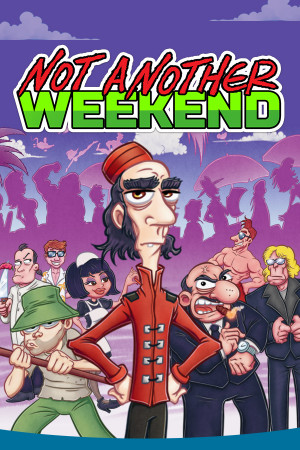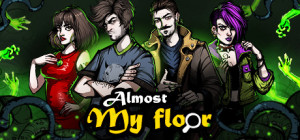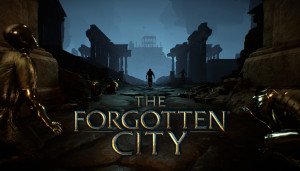Review for Critters for Sale

Playing Critters for Sale, you get a sense almost of having stumbled by accident onto something you shouldn’t have. There’s a sort of hair-at-the-back-of-your-neck feeling that creeps up at certain points, like maybe you’ve looked at it too long and it’s started to look back. It has moments when the sensation of unmistakable wrongness—of dread rising not simply from the narrative but woven directly into the design itself—is so strong that you might start to anticipate some metafictional twist; that the game will proclaim itself “cursed,” perhaps, or position itself as the lost MacGuffin of some creepypasta story about a game that drives players mad. But no such revelation comes. This isn’t that sort of tale: if you want explanations, or sudden yanks of the rug, or even to understand why you feel so ill at ease, Critters for Sale won’t offer anything but dark laughter at your expense. If you want something different, though—something strange, something uncanny, something utterly, confoundingly unique—this is the game for you.
Critters for Sale is divided into five chapters, each named for a different “critter:” Snake, Goat, Monkey, Spider, and Dragon. Developer Sonoshee previously released Snake and Goat as free downloads in 2019, but this full commercial release represents the first time all five are available to play and is now the only way to access any of it. The game insists its chapters can be played in any order, and while this isn’t strictly true—more on that later—they’re all selectable at the start, and you’re free to move from one to another at your discretion.
At first glance, the five chapters appear to tell discrete, bite-sized stories, each casting you as a different character from a different time period. In “Snake” you play as Sergei, a New York cab driver in 2033, summoned to the Limelight Club by a surprise text from Michael Jackson (yes, that one); in “Goat” you’re Jaafar, a desert wanderer seeking a mythical treasure cave in the year 972; in “Monkey” you’re Othman, a Moroccan teenager in 1991, venturing with your little brother to a lila ceremony presided over by a master musician of the Gnawa people. “Spider” withholds your identity, placing you in a mysterious casino in 1997, while “Dragon”… well, you’ll have to figure that one out for yourself.
Each chapter begins without any obvious connection to the others, but little details that crop up in dialogue serve to gradually uncover the submerged outline of a connective framework. There are repeated allusions to the mysterious, threatening “Noid Men,” who seem to serve Satan himself, and to the Paradise Architects, an even more mysterious group with whom they’ve clashed for millennia. What information you do acquire comes at a deliberate pace, so that it’s never clear if something you’ve heard in passing might be significant or just background noise—at least, not until someone on the other side of the world brings it up a thousand years later. Your immediate goal in every story appears at first to be small and personal in scale, but it’s never long before you’re drawn into a surreal, shifting dreamscape full of bizarre, anachronistic characters who reveal that you’re part of something much larger and stranger.
Just what that “something” might be is difficult to grasp, remaining just out of reach while always seeming as if it could become comprehensible if you keep paying attention. Even having played the whole thing, I find it hard to describe any part of Critters for Sale’s narrative without struggling for the appropriate language. Why, for instance, is the King of Pop texting Sergei twenty-four years after his own death in a club that’s been defunct for even longer? What about the other characters clearly inspired by real people—most notably MC Ride of the hip hop group Death Grips, who shows up under his legal name ten centuries before he was born? And why do the verbal descriptions of people you meet so often fail to jibe in any way with their close-up portraits? There are possible explanations, and in the moment they make a kind of sense—but then something might happen immediately afterward to throw them into question. This is a world where a forbidden door might open for you based on a lie you told a stranger somewhere else, or where a demonic being can go from threatening you one moment to reminding you that you’re actually one of its oldest comrades. There’s logic there, but it’s the logic of a nightmare.
And “nightmare” is the operative word here. Every aesthetic choice is calculated toward unsettling you, throwing you off your guard or dislodging you in some way from a feeling of safety. Always the shifting, phantasmal score keeps you slightly on edge, running the gamut from discordant, crashing sheets of clanging sound; to low, grumbling bass pieces like a beast waking up hungry; and down into spacy, ethereal synth tracks like a dentist might play as the knockout gas takes effect. The flickering, ultra-grainy 1-bit graphics make each screen seem like the final broadcast on a dying monochrome TV set, and the simple, matter-of-fact nature of the descriptive text belies the ominous, uncanny quality of what’s happening around you. From a distance, everyone you encounter seems a black silhouette; up closer you find that many have bulbous, mask-like faces, with some wearing fetishwear or big, incongruous sunglasses. Bit players have strange names that sound as if they were picked out of a dictionary: “Mike Lobster,” “Moonshine Simon,” “Borja Butch.” None of it makes sense on a conscious level, and yet it’s all played perfectly straight, without any attention ever being drawn to such details.
By far the strangest thing about Critters for Sale, though, is that most of this works. It’s not simply bizarre—it’s compelling, and while much of the story feels impossible to grasp on the surface, there’s an ineffable quality to the imagery that resonates somewhere deeper, on an almost unconscious level. I kept playing, frankly, because I wanted to see what the game would do next; I could never be certain where the experience would take me, and each development was just as startling and unpredictable as what had come before. Every new screen seemed unlimited in its potential, like absolutely anything could happen and it would still somehow be in keeping with the rest of the game.
That’s not even getting into how funny the writing can be, often veering on a dime from the horrific into the hilarious and back again, but to explain how it manages that is probably impossible without just telling you to see for yourself. All five chapters contain moments that made me laugh when I hadn’t expected to, and despite the oppressive sense of foreboding hanging over everything, these never struck me as ill-considered or out of place. It’s a delicate balancing act that the game pulls off adroitly, and I’m pleasantly baffled that it did.
Each chapter has a set number of endings, and insofar as the game has an objective it’s to find all eighteen, which took me about five hours in total. Some endings are natural finales, but others are deaths, which can come about without much warning by clicking a certain object or selecting the “wrong” dialogue choice. Still, deaths aren’t made to feel like failures, but rather like a necessary step that helps you learn more about the cosmic web you’re part of. It’s simple to restart afterward, and a helpful fast-forward button lets you speed through dialogue you’ve already seen. Nothing changes between playthroughs, so it’s easy enough to avoid the fateful action(s) the next time around.
Death also allows Critters for Sale to flex its most horrific muscles. There are a few truly gruesome ways to meet your end; others are bloodless but incredibly unsettling, taking the baseline high-strangeness and amping it up in ways so sudden and unexpected that I wouldn’t dream of defanging them by spoiling the details. Most of the time the game is content to scare by simply smiling wide so that its fangs show—but it’s not above biting to prove the point.
The majority of the “puzzles” involve simply figuring out how to trigger an ending—i.e., what to click and when—but there are a handful of actual brainteasers to solve as well. These include a sliding-tile task, a music sequence puzzle involving a piano (requiring an ear for scales), and a series of memory- and reflex-based minigames that let you earn the money you’ll need to find one ending in the “Spider” chapter’s casino. The latter especially are quite challenging, and doubly so if you’re using a touchpad instead of a mouse, but they’re conquerable if you’re willing to stick with them. (If you’re not, a post-release patch lets you bypass them with a simple button press.) Occasionally you’ll find something to pick up, but there’s no inventory; if you’ve found an object your character will simply use it when the time comes.
Contrary to the game’s own claims that it can be played in any order, a few puzzles are actually unsolvable until you’ve gone through multiple chapters. Two chapters feature puzzles that require knowledge of all five, and solving those is necessary to complete a puzzle in a third, so while there’s no prescribed order in which to begin the chapters, you can’t find every ending without moving back and forth between them. This can be frustrating, as the game’s marketing tells you one thing while leaving you to figure out that it isn’t really true.
You navigate the environments in first person, with an interface reminiscent of MacVenture titles like Uninvited and Déjà Vu. The current scene appears as a mostly static image in the center of the screen, occasionally with pieces of animation or rotoscoped live-action footage. (Rapidly flashing lights also feature heavily in many scenes; the game opens with a very prominent epilepsy warning.) Sidebars to the left and right provide relevant information, usually the chapter title, the year, the location, the temperature, and your character’s identity. Text shows up in a box at the bottom of the screen, with a name appearing to signify when a character is speaking. Flanking the text box are the fast-forward button on the right and the quit-to-menu button on the left.
All interactions occur with a single click. There’s no hotspot indicator or even a way to tell what you’re hovering over; if you think something might be important, you’ll just have to click it and see. Text descriptions from an omniscient narrator appear when you click on interactive objects, while occasional dialogue choices appear in the midst of conversations. (All of this is unvoiced, in keeping with the lo-res aesthetic.) Clicking on any of the various silhouetted characters in a scene switches the point of view to a close-up of the speaker; as they talk their portrait will cycle through several images to approximate their changing expressions. (Characters based on celebrities are portrayed using pictures of their real-world counterparts, though the game is careful to stress that its interpretations are totally fictional.)
Does any of this make sense? Do you feel, having read this review, like you have a good handle on what this game is like and what it’s about? If I’ve done my job, then no, it doesn’t, and no, you don’t, because the only way to halfway understand what Critters for Sale is like is to actually play it. If you’ve come this far and think this all sounds too out there for your tastes, it probably is—this is a game that wears “Not For Everyone” not simply as a badge of honor but as an entire dress uniform. If, however, what I’ve said has piqued your interest; has made you think that maybe this is the kind of cosmic vapor-vision you have to see for yourself, then I can’t recommend enough that you do so. It’s one of the most memorable gaming experiences I’ve ever had, and I expect to be evangelizing about it for years to come.





























